In 2023, India surpassed China to grow to be the world’s most populous nation. The improvement got here towards the backdrop of a declining beginning fee (6.4 births per 1,000 folks) and whole fertility fee (~1%) in China. China additionally recorded a detrimental inhabitants progress fee for the primary time in six many years. This means a rising dependency ratio, which is projected to extend over time. In distinction, India’s inhabitants, regardless of reaching substitute ranges (whole fertility fee of two.1), is anticipated to develop and peak round 2060.
These developments have vital penalties on home consumption within the two international locations. Consequently, it turns into crucial to match their consumption figures and strengths/weaknesses. A cross-comparison additionally assumes significance owing to the contrasting experiences of the 2 international locations of their respective geopolitical landscapes.
How do the numbers examine?
Both India and China have a big shopper base. A shopper is anybody who spends greater than $12 a day, as per the Purchasing Power Parity [PPP], 2017.
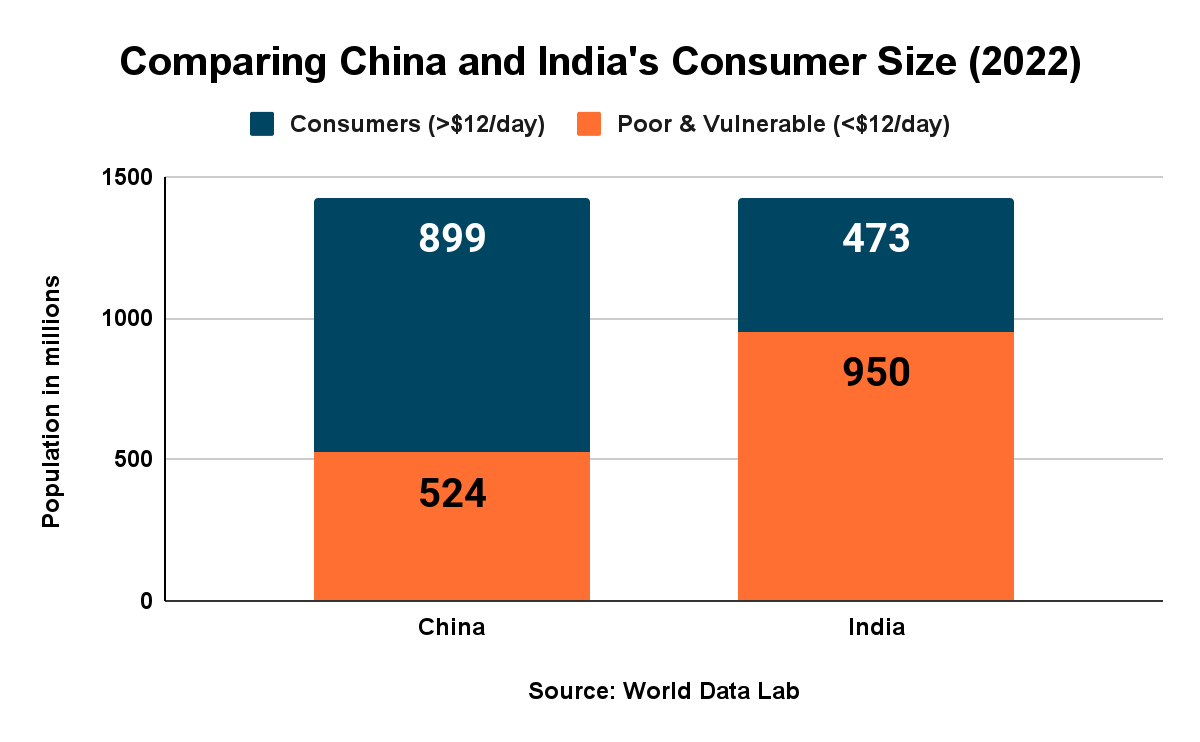
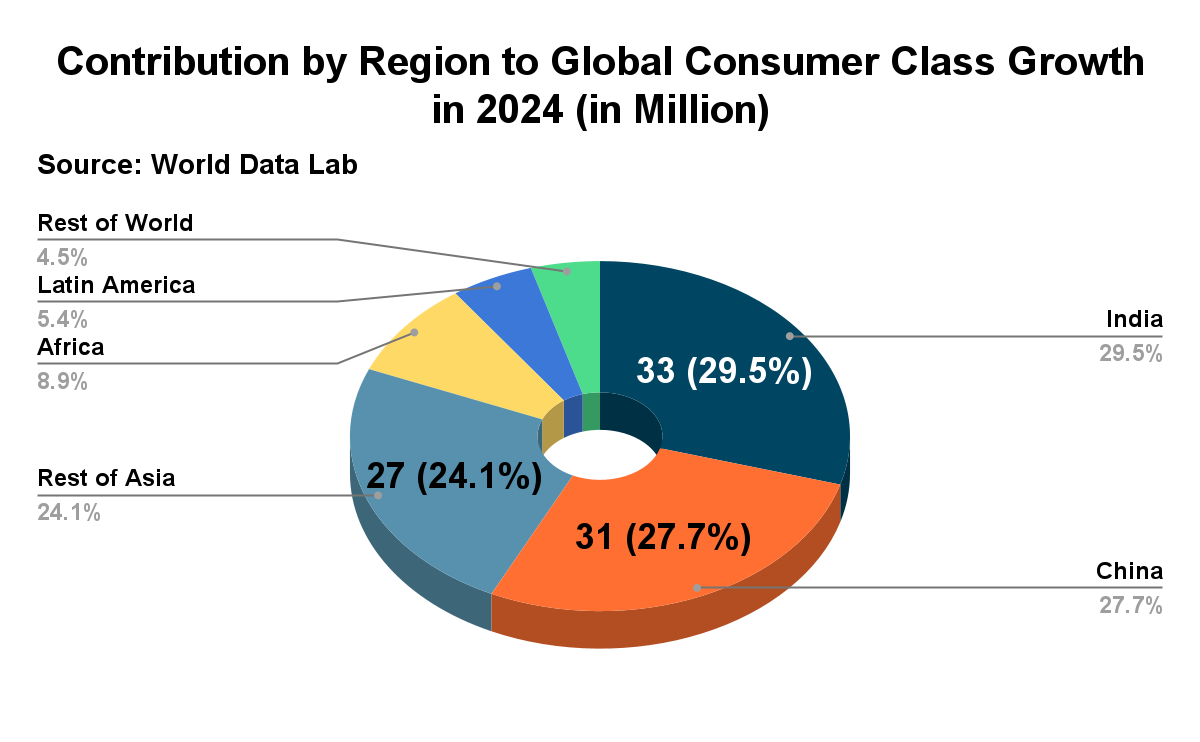
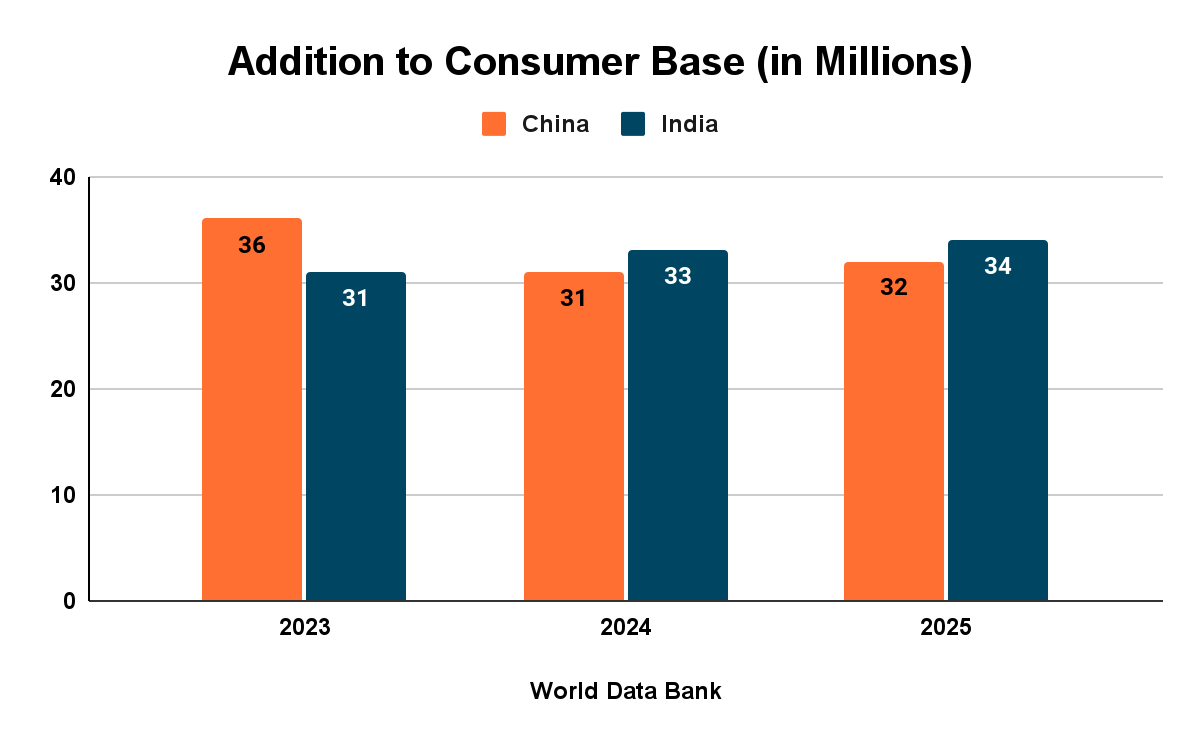

Private Final Consumption Expenditure (PFCE), which measures whole consumption expenditure by households and non-profit establishments serving households on items and providers, serves as a helpful proxy for shopper spending particularly as earnings and consumption are concentrated throughout the shopper courses. The information reveals that as a share of GDP, India spends considerably extra on consumption than China. While PFCE contributes greater than 58% to India’s GDP at present, it contributes solely 38% to China’s financial system. Additionally, the ultimate consumption, which additionally consists of authorities consumption expenditure, constitutes 68% of the GDP for India and 53% for China. This implies that the federal government is a a lot greater shopper in China than in India. Furthermore, whereas the proportion for India is steadily rising, the identical for China has been on a decline.
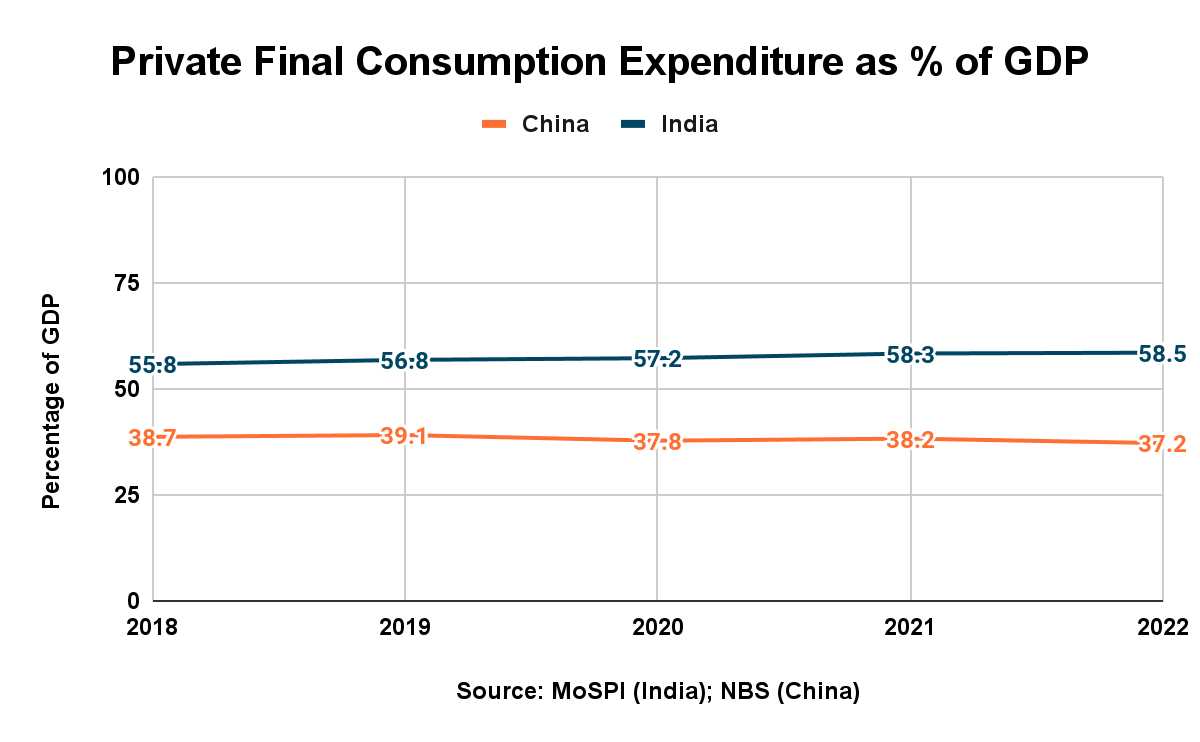
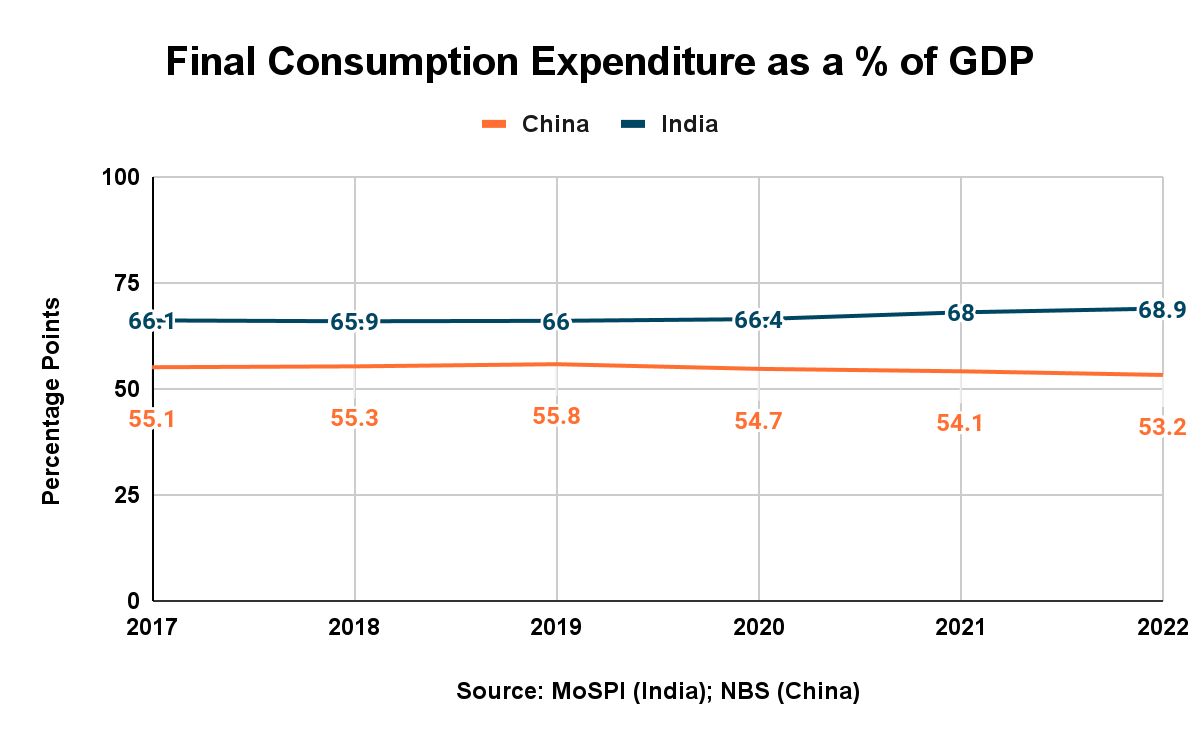
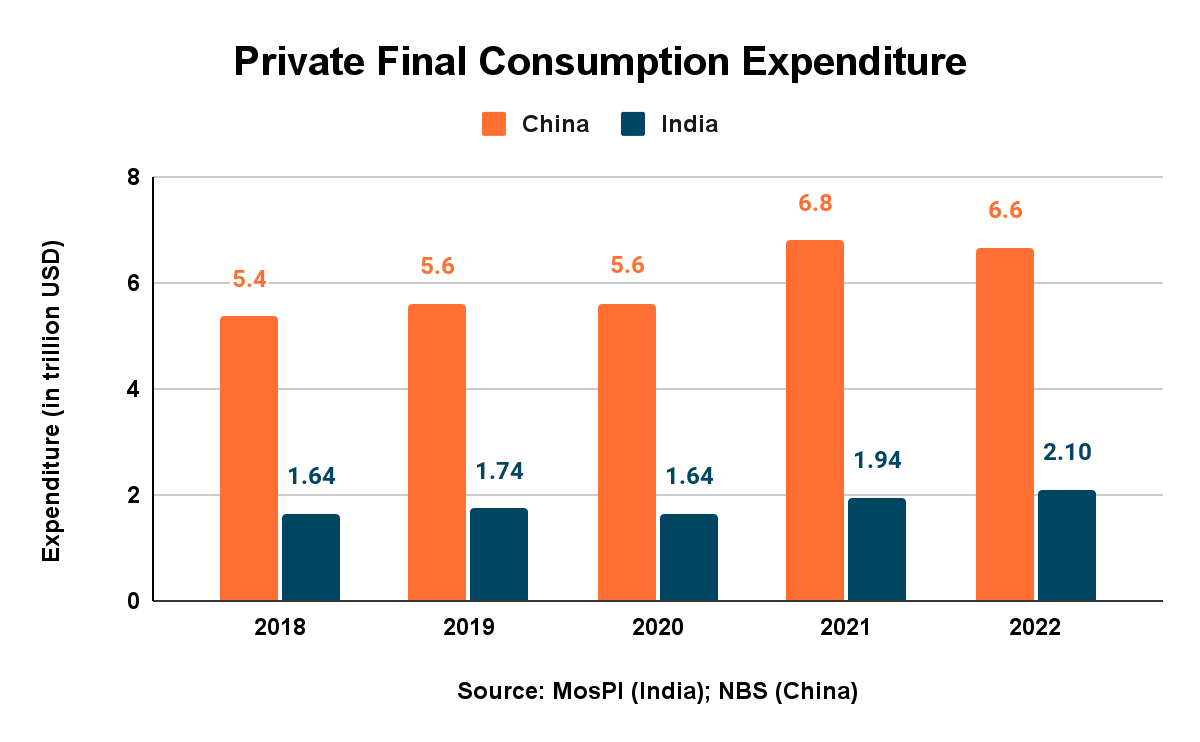

The combination information on PFCE reveals that regardless of China’s financial system being roughly 5 occasions greater than that of India’s, its PFCE quantities to comparatively loads much less, solely about 3.5 occasions that of India’s. This not solely implies that consumption is a a lot bigger contributor to India’s GDP, however that India will equal China’s consumption stage at a comparatively a lot decrease GDP (~$10 trillion) as towards China, which achieved the dimensions at roughly $17 trillion.
Secondly, regardless of the gloomy narrative round China’s consumption, its PFCE has registered a big improve prior to now 4 years. Its PFCE remained quite fixed in 2020 (pandemic 12 months) earlier than registering an enormous uptick in 2021. On the opposite hand, India’s figures have steadily elevated from $1.64 trillion in 2018 to $2.10 trillion in 2022. Thirdly, in 2022, whereas China recorded a decline in its numbers — each combination ($6.6 trillion in comparison with $6.8 trillion) and per-capita ($4,730 in comparison with $4,809) — India witnessed marginal progress in each classes. Nevertheless, the distinction within the expenditure between the 2 international locations has widened from $3.8 trillion in 2018 to greater than $4.5 trillion in 2022.
Finally, when it comes to ratio, India’s PFCE has closed the hole with China from ~3.3 to ~3.1. The significance of India closing the hole when it comes to ratio right here must be underlined. Usually, with a rustic like China that’s working on an enormous base, even a marginal progress fee may inflate the mixture numbers manifold. This could be true even when India, alternatively, have been including expenditure at a comparatively increased progress fee than China. But to beat China when it comes to ratio would have required India to develop at a considerably increased fee than China, which it did.
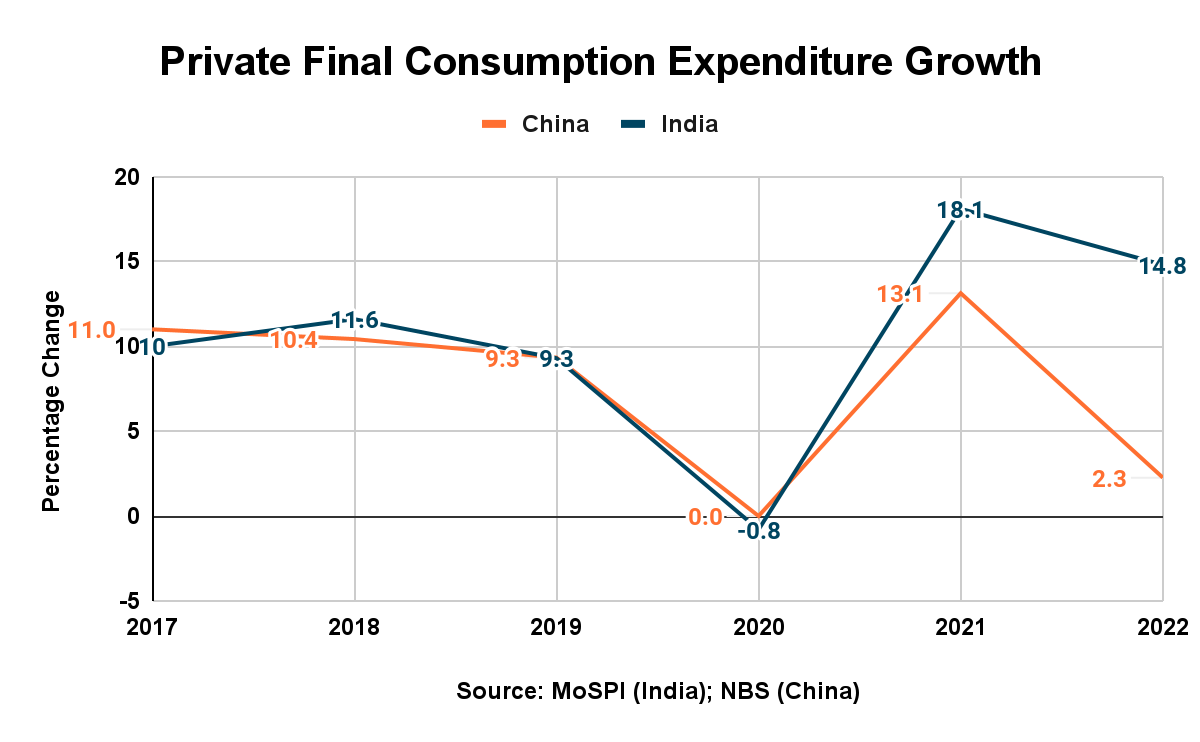
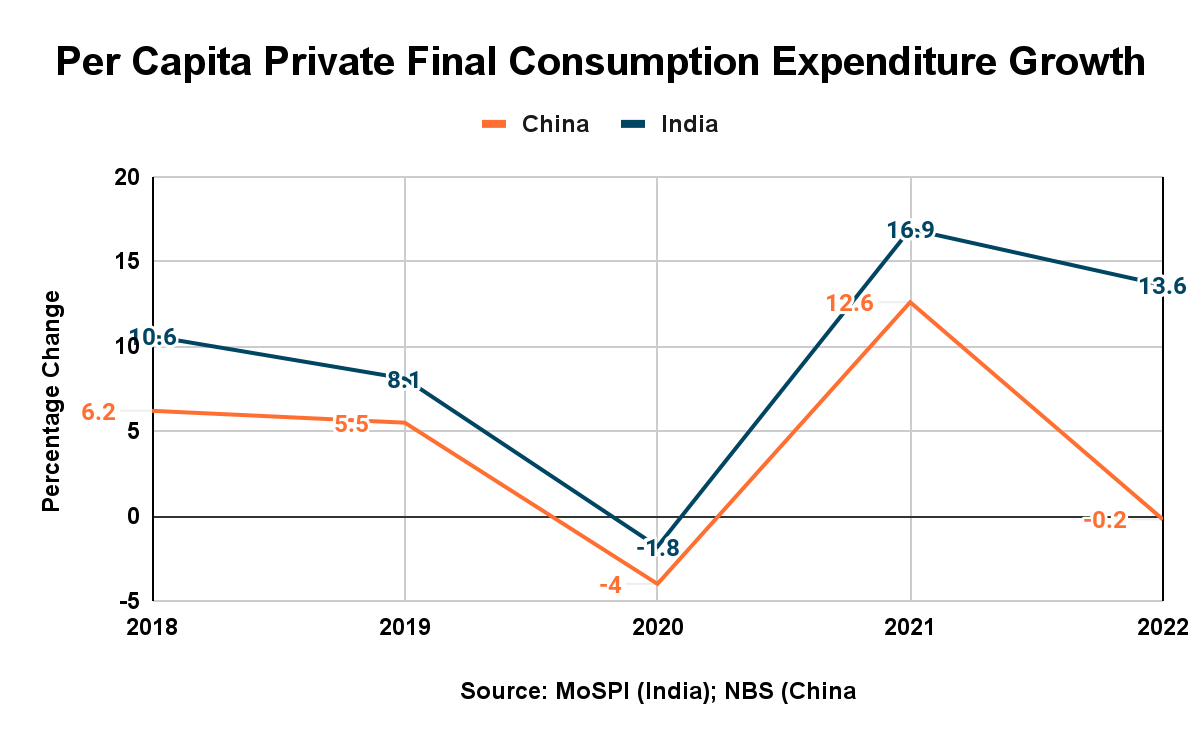
In phrases of per capita PFCE, whereas the values mirror combination numbers, there may be one exception. Even as India closed the hole in combination phrases, China widened the per capita PFCE marginally from ~3.0 occasions of India in 2018 to ~3.1 in 2022. This could possibly be defined by China’s detrimental inhabitants progress in 2022.
Comparing the nominal PFCE numbers alone may typically result in a distortion. This is as a result of the nominal figures don’t take into consideration the discrepancies between the price of residing that may exist. Consumption is not only about consumed worth but additionally consumed quantity. And nominal figures solely give an thought of whole consumption worth — won’t give an thought of the quantity of products and providers consumed. Thus, to account for consumption by worth, a comparability of PPP figures turns into crucial.
On evaluating the PPP numbers, the hole between the consumption expenditure additional closes down. In PPP phrases, China’s PFCE is roughly 1.5 occasions that of India. To put this in context, China’s GDP (PPP) is roughly 2.5 occasions of India’s. The relative hole between China and India widened from ~1.58 in 2018 to ~1.66 in 2020 and 2021, however 2022 witnessed India closing the hole to ~1.55.
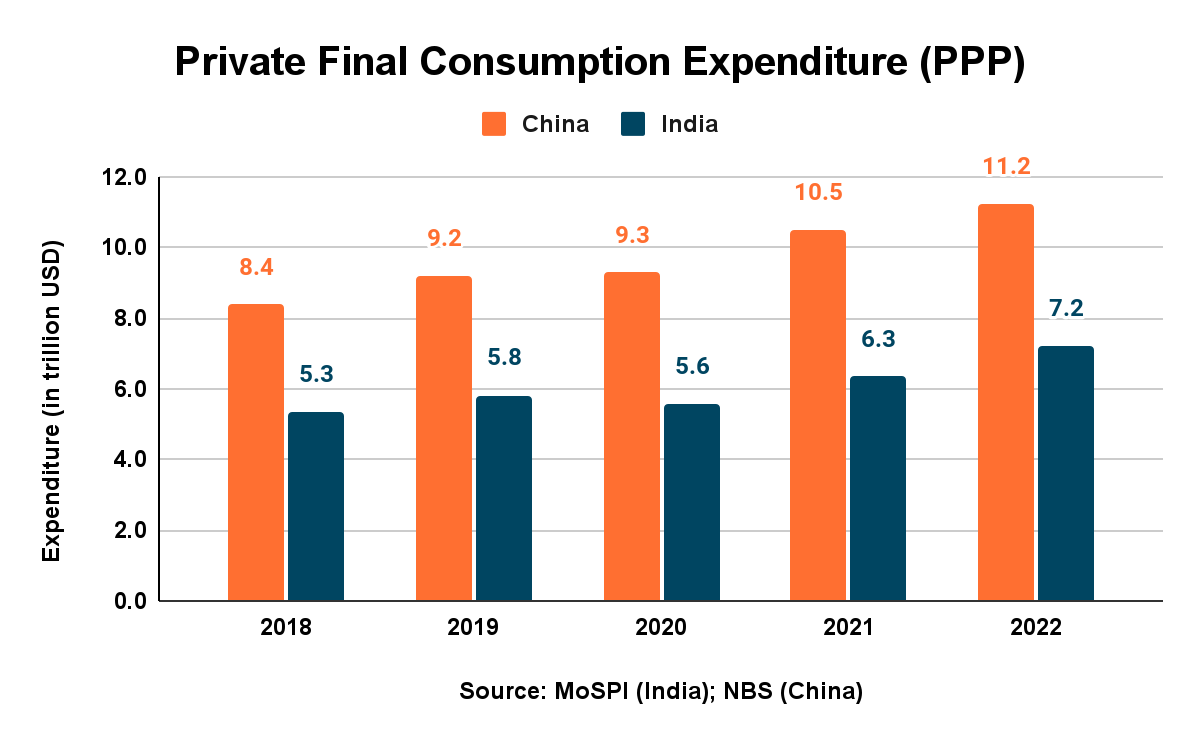
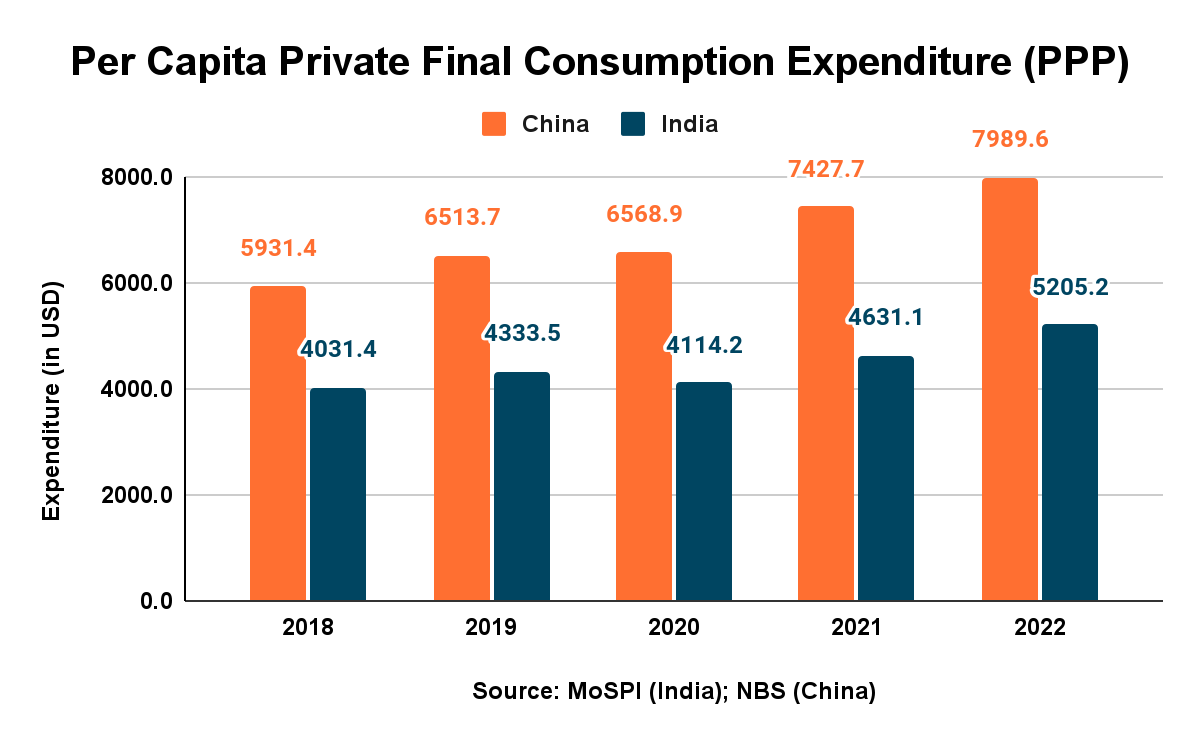
However, in PPP phrases, China witnessed a marginal improve of ~$0.7 trillion owing to improved yuan-dollar PPP alternate charges. On the opposite hand, India added a trillion {dollars} to its consumption expenditure (PPP) in 2022 regardless of a worsening alternate fee.
Expenditure by classes
India’s consumption expenditure is characterised by increased spending on meals, clothes, footwear, and transport and low spending on schooling, tradition, recreation, and healthcare — typical of an underdeveloped or growing market. China’s consumption basket, alternatively, represents a comparatively developed market. Even as meals and drinks represent the most important chunk of China’s consumption, it’s declining as a share of its whole consumption expenditure — an indication of a maturing market. Additionally, it spends a considerably increased share of its expenditure on housing, white items, recreation, schooling, and healthcare than India. To put issues in context, in superior economies just like the U.S., Japan, EU, Germany and the U.Ok., expenditure on meals isn’t the best bracket.
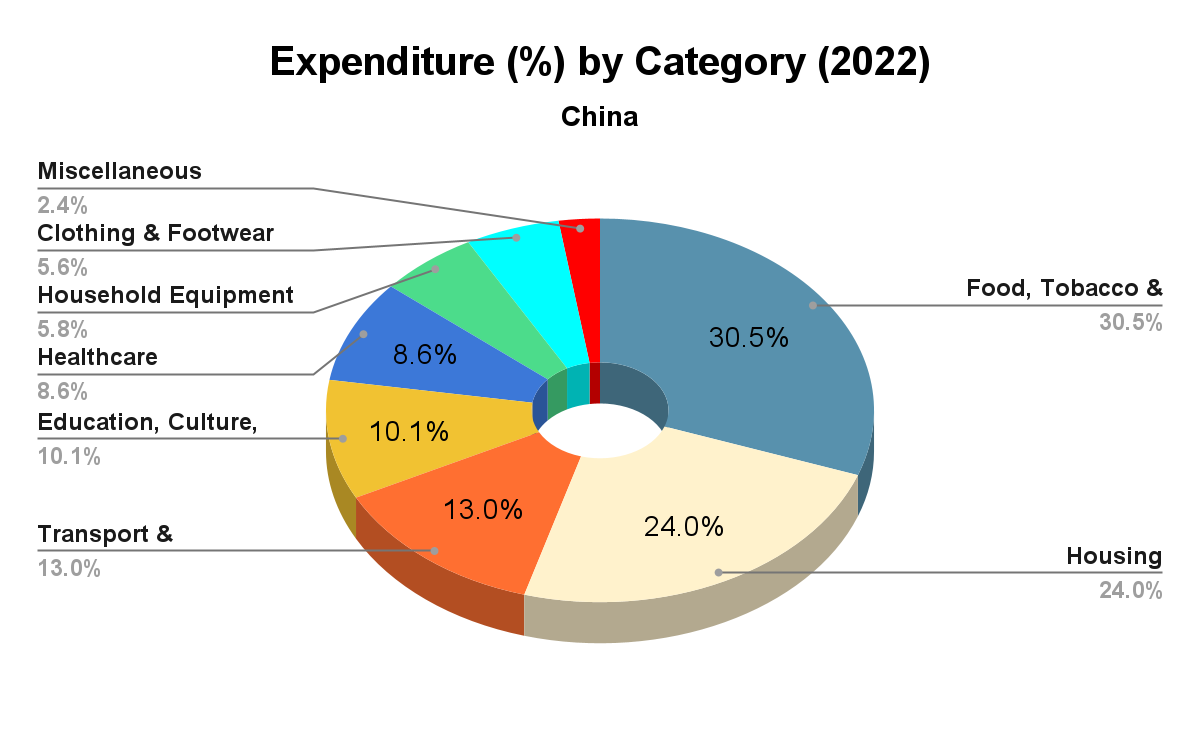
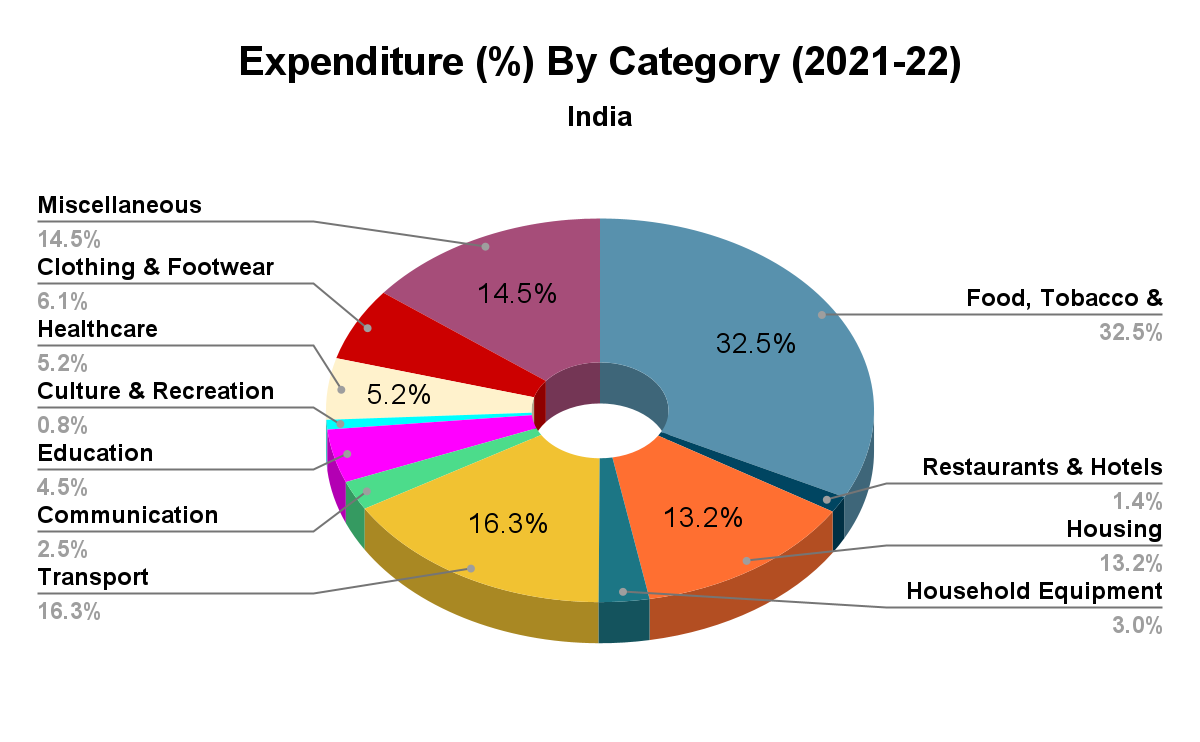
In combination phrases, India spends round half of what China spends on meals, transport and communication, and clothes and footwear. For India, which is a fifth of the Chinese financial system and spends virtually the identical share (of the full expenditure) as China on these three sectors, the truth that its whole expenditure within the above three classes is round half of China is kind of vital. In truth, India spends somewhat over 50% of what China spends on transport and communication. (Note: India’s information for 2022 weren’t out there.)

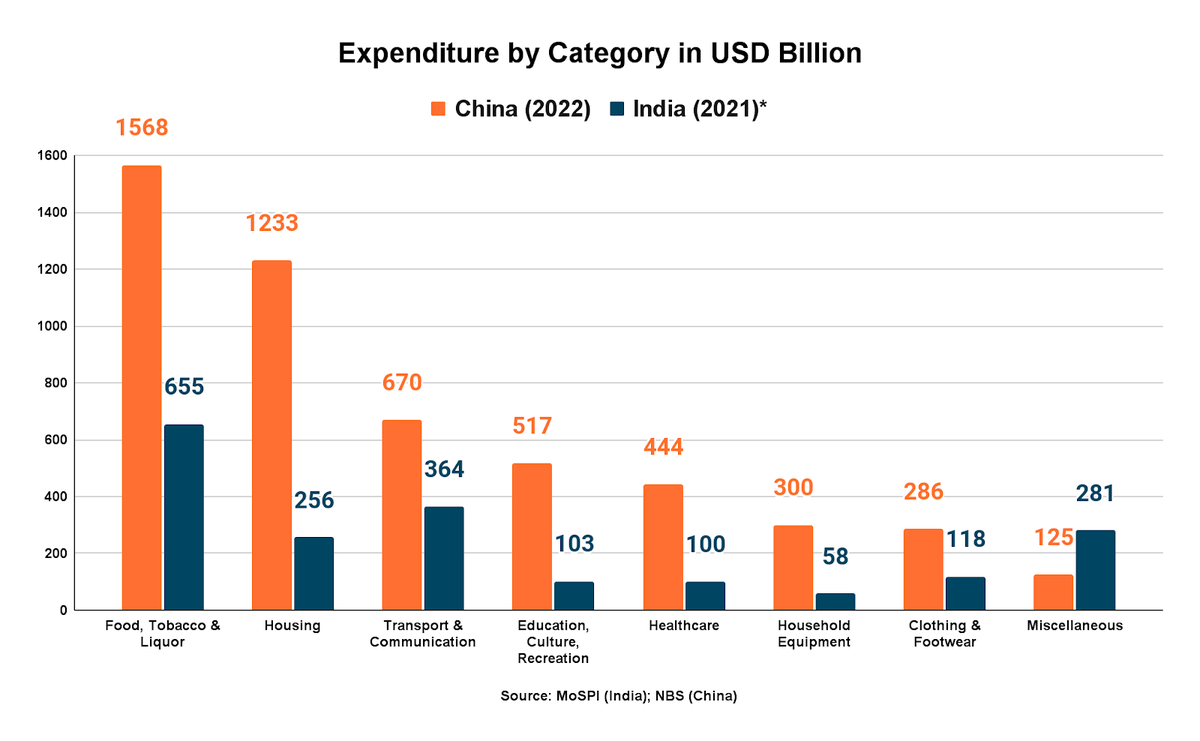
Adding to the optimism is the truth that the actual progress fee registered by every of those particular person classes in India usually outperformed even the nominal progress charges noticed in China.
Whether India’s shopper class with elevated spending enhances its attraction to overseas companies as a most popular vacation spot over its rivals amidst the China+1 narrative stays to be seen.
Amit Kumar is a Research Analyst at Takshashila Institution. He tweets at am_i_t_kumar.
Source: www.thehindu.com



